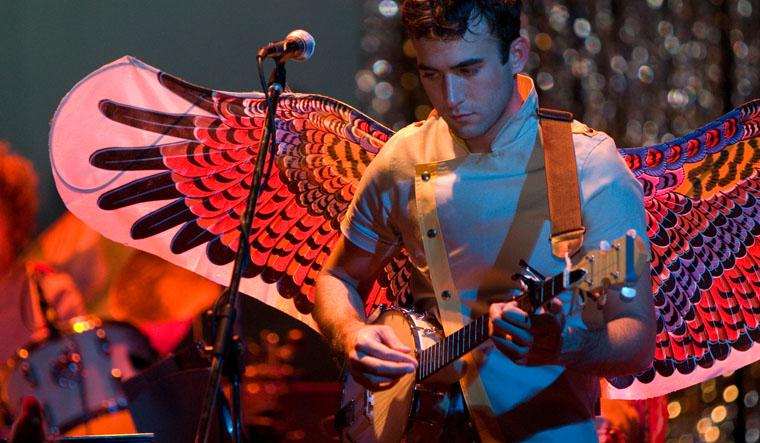Indie is a more than a source of entertainment. Indie folk music a genre that blends the introspective qualities of folk with the independent spirit of indie, has carved out a unique place in the music world. More than just entertainment, it embodies authenticity, self-expression, and the power of storytelling. In the 21st century, its rise to prominence gave both established and emerging artists the freedom to challenge mainstream conventions.
This article explores the importance of indie folk music by examining its cultural influence, impact on the industry, and role in driving social change.
A Brief Overview of Indie Folk Music
Indie folk fuses traditional folk sounds with modern indie influences. The folk revival of the 1960s, led by figures like Bob Dylan and Joan Baez, introduced socially conscious folk music to mainstream audiences. Later, in the 1990s and 2000s, musicians embraced the indie ethos, producing and distributing their work outside of major labels.
Defining features of indie folk include acoustic instrumentation, introspective lyrics, and an emphasis on authenticity. Artists like Bon Iver, Iron & Wine, Fleet Foxes, and Phoebe Bridgers became synonymous with the genre.
These musicians often experiment with different styles, blending folk’s simplicity with elements of rock, electronic, and ambient music.
Indie Folk’s Cultural Impact
Indie folk music resonates with listeners by offering raw, unfiltered reflections of life. Unlike heavily produced pop tracks, the genre explores themes like love, loss, nature, and self-discovery with deep emotional vulnerability. This emotional depth builds strong connections with its audience.
Beyond individual listening, indie folk fosters a sense of community among fans who value authenticity over commercial appeal. Intimate live performances create participatory experiences, closing the gap between artists and their audience. These moments generate a shared emotional journey, strengthening the bond between listeners and performers.
The genre also renews interest in traditional folk. By blending old and new, it introduces younger listeners to folk’s roots while keeping the sound fresh and relevant.
The storytelling and narrative elements link back to folk music’s role in preserving cultural history, helping modern listeners find relevance in both past and present.
Influence on the Music Industry
Indie folk music has reshaped the music industry by promoting independence and creative control. Many artists release their work through small, independent labels or self-publish on platforms like Bandcamp and SoundCloud. This approach allows them to retain artistic freedom and avoid compromises imposed by major record labels.
The rise of streaming services like Spotify and Apple Music has further enabled indie folk artists to reach global audiences without significant financial backing. Playlists curated by users or tastemakers—such as “Acoustic Chill” and “Indie Folk Essentials”—have become essential tools for discovery. The genre has flourished in this landscape, connecting millions with compelling new voices.
Indie folk’s influence extends into mainstream music. Pop artists like Ed Sheeran, Mumford & Sons, and Vance Joy incorporate folk elements into their sound, blurring genre boundaries.
This crossover introduces acoustic-driven styles to broader audiences, further amplifying indie folk’s impact across genres.
Indie Folk as a Catalyst for Social Change
Throughout history, folk music has aligned with social and political movements, giving a voice to marginalized communities. Indie folk carries this tradition forward by addressing issues such as mental health, environmentalism, and social justice. Its introspective nature allows artists to explore these themes in ways that feel personal and relatable.
Musicians often use their platform to raise awareness and advocate for change. For instance, Hozier’s music speaks directly to social issues, with songs like “Take Me to Church” addressing discrimination and “Nina Cried Power” honoring past protest singers. This alignment with activism reinforces the genre’s commitment to authenticity and community values.
Environmental themes also feature prominently in indie folk. Many artists draw inspiration from nature, using their lyrics to highlight ecological issues. References to landscapes, seasons, and natural elements reflect a deep appreciation for the environment, inspiring listeners to adopt more eco-conscious habits or support environmental causes.
The Role of Storytelling in Indie Folk
At its core, indie folk thrives on storytelling. The genre’s lyrics explore both fictional and autobiographical stories, revealing universal truths through personal experiences. Unlike pop music, which often prioritizes catchy hooks, indie folk emphasizes narrative depth and emotional meaning.
Storytelling offers diverse perspectives, allowing artists to share their unique experiences or cultural backgrounds. These stories provide listeners with solace, empathy, and moments of reflection.
Indie folk’s ability to connect through narrative fosters deeper emotional engagement, encouraging listeners to reflect on their own lives.
Challenges and the Future of Indie Folk
Despite its growing popularity, indie folk faces challenges that threaten its independent spirit. Increased commercialization risks diluting the genre’s authenticity as mainstream artists adopt its elements. The simplicity and emotional depth that define indie folk may weaken if shaped too heavily by market demands.
However, the genre’s core values—authenticity, independence, and emotional resonance—continue to attract passionate musicians and audiences. Indie folk will likely evolve by blending with other genres while retaining its storytelling essence.
New voices will push the boundaries of what the genre can become, ensuring it remains a meaningful musical experience.
Conclusion
Indie folk music stands as more than a genre—it embodies a cultural movement that champions authenticity, challenges industry norms, and promotes storytelling as a tool for connection. Its influence on both mainstream music and independent production reflects its significance in today’s musical landscape.
As the genre evolves, its focus on vulnerability, artistic freedom, and emotional depth will remain essential. Indie folk music invites listeners to slow down, reflect, and find beauty in both the simplicity and complexity of life. Its enduring power makes it a vital and lasting force in contemporary music.



More Stories
Unlocking Legal Understanding: Law Animation
Future Trends in Online Cricket ID Services
Snapista: Revolutionizing Visual Storytelling